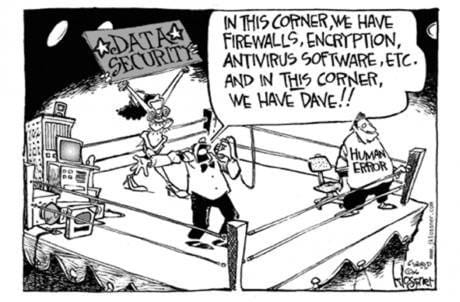Security When On-Premise Meet Cloud Migration

In today's rapidly evolving IT landscape, many organizations find themselves at a crossroads: maintaining critical legacy systems on-premise while facing increasing pressure to migrate to cloud environments. This transition creates unique security challenges that require careful planning and execution
The Security Comfort of On-Premise Infrastructure
For decades, organizations have relied on on-premise solutions to house their most sensitive operations and data. These systems offer several security advantages:
- Physical access control to servers and infrastructure
- Direct oversight of security implementations
- Customized security controls tailored to specific needs
- Independence from third-party security practices
Many critical codebases were developed specifically for these controlled environments, with security measures designed for a world where the perimeter was clearly defined.
The Cloud Migration Pressure
Despite the security comfort of on-premise systems, businesses face mounting pressure to adopt cloud solutions:
- Vendor support for on-premise solutions diminishing
- Business stakeholders demanding cloud-based agility and scalability
- Competitive pressures to modernize IT infrastructure
- Cost considerations as on-premise maintenance grows expensive
This pressure often accelerates timeline expectations, creating scenarios where security teams must rapidly adapt legacy systems for environments they weren't designed for.
The Vulnerability Gap
When organizations rush cloud migration, they often create a dangerous vulnerability gap:
- Legacy code exposed to new threat vectors
- Security assumptions no longer valid in cloud environments
- Incompatible security models between on-premise and cloud systems
- Stretched security teams managing dual environments
The result is a perfect storm of security challenges that puts organizational data at risk.
Business Risk: The Blind Spot in Cloud-Only Security Investments
A critical oversight in many cloud migration strategies is the disproportionate allocation of security resources toward cloud environments while leaving legacy systems vulnerable. This approach fundamentally misunderstands the nature of business risk during transition periods.
Business risk doesn't simply shift from on-premise to cloud in parallel with migration plans. Instead, it often intensifies across both environments during the migration period, creating a dangerous security deficit for legacy systems that still house critical operations.
Several factors contribute to this risk imbalance:
- Security budgets increasingly directed toward cloud security tools and expertise
- Diminishing expertise in legacy system security as talent focuses on cloud technologies
- Reduced patching and maintenance of systems marked for eventual retirement
- Integration points between legacy and cloud systems creating new attack vectors
- Hybrid architectures introducing complexity that security teams aren't equipped to manage
The result is a dangerous scenario where business-critical legacy systems become increasingly vulnerable precisely when they're most exposed through new integration points with cloud services.
Addressing business risk effectively requires recognizing that security investment must span both environments proportionally throughout the entire migration lifecycle—not just follow where new development occurs.

Building a Secure Bridge
Instead of viewing cloud migration as an all-or-nothing proposition, organizations should consider a strategic approach:
- Conduct thorough security assessments of legacy systems before migration planning
- Implement a secure access layer between cloud and on-premise systems
- Consider hybrid approaches that maintain critical components on-premise
- Develop clear security requirements for any cloud migration
- Allocate sufficient time and resources for security testing in new environments
- If your new cloud security solution only secures cloud systems you still have to deal with the security gap for your legacy services while re-refactoring or replacing legacy services
- As you keep on investing understand how it affects your actual business risk
- If you keep investing in more "cloud only security solutions" how do you deal with your day to day operations, where revenue comes from ?
Moving Forward
While cloud migration pressure is real, organizations must resist the temptation to rush critical systems into environments they weren't designed for. Security leaders should advocate for realistic timelines that allow for proper security implementation.
By acknowledging the legitimate security concerns of legacy systems while embracing the innovation potential of cloud technologies, organizations can chart a path forward that enhances rather than compromises their security posture.
The key lies not in resisting change, but in ensuring that change happens at a pace that allows security to remain a priority rather than an afterthought.
